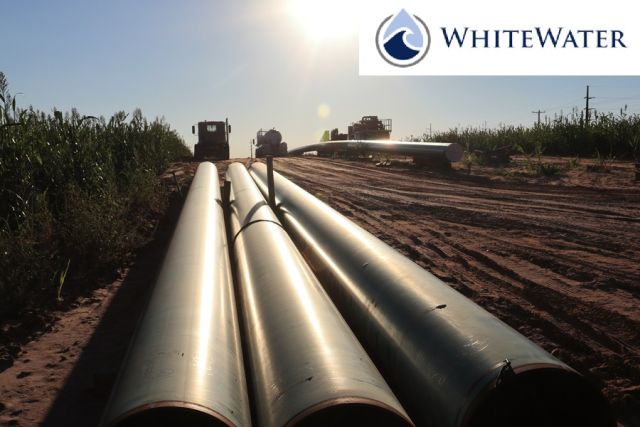
Whitewater Midstream announces a joint venture to build the 2.5 Bcf/d Blackcomb pipeline, which would offer a new connection from the Permian Basin to South Texas. (Source: Shutterstock.com)
A long-awaited new natural gas pipeline out of the Permian Basin has reached final investment decision (FID).
Private company Whitewater Midstream said on July 31 that the Blackcomb Pipeline, with a capacity of 2.5 Bcf/d, is expected to connect the Permian Basin to the Agua Dulce gas hub near Corpus Christi, Texas, by the second half of 2026.
Whitewater, MPLX and Enbridge, the consortium that owns the Whistler Pipeline, along with an affiliate of Targa Resources formed a joint venture to build the pipeline, which will be about 365 miles long and have a 42-inch diameter.
The Whistler Pipeline Corp. (WPC) will own a 70% interest in the project. MPLX has bought stakes outside of the WPC JV and Targa will take the remainder. The ownership of the line breaks down with WhiteWater holding a 35.4% stake; MPLX with 33.8%; Targa with 17.5%; and Enbridge with 13.3%. I Squared Capital owns Whitewater’s stake in WPC.
"We are excited to partner with Targa by leveraging Whistler's expansive footprint in Waha and Agua Dulce to develop the Blackcomb Pipeline. Blackcomb will provide much needed incremental natural gas takeaway capacity for Permian shippers," said Christer Rundlof, CEO of WhiteWater.
In the release, Whitewater said the FID decision was made after securing transportation agreements with “predominantly investment grade shippers” such as Devon Energy, Diamondback Energy, Marathon Petroleum and Targa Resources.
The line will be sourced from multiple upstream connections to gas processing facilities in the Midland Basin and the Agua Blanca Pipeline in the Delaware Basin.
A map of the proposed line’s route was unavailable. However, a line connecting the Midland and Delaware basins to the Agua Dulce area would likely follow a similar route as the Whistler Pipeline, according to an analysis by Zack Van Everen for TPH&Co.
Van Everen noted that the Whitewater Matterhorn Express pipeline, which runs from the Permian Basin to the Houston area, is a comparable project.
“Whitewater made FID on Matterhorn in May 2022 and is slated to enter service in the next few months, equating to a total build time of about 28 months for a pipe that is 34% longer,” Van Everen wrote.
On the downstream side, TPH analysts have forecast that the Agua Dulce will need additional gas once NextDecade’s Rio Grande LNG and Cheniere’s Corpus Trains 8 and 9 come online.
Producers in the Permian have been calling for another major pipeline project out of the region.
Gas egress pipelines out of the Midland and Delaware basins has been flowing at near capacity since 2023. Prices at the Waha gas hub near Pecos, Texas, have frequently gone into negative territory in 2024.
The Matterhorn Pipeline is expected to relieve the current capacity shortfall; however, projections for increasing natural gas production show that the new pipeline will reach capacity by 2026.
“On the gas macro front, this is a much-awaited FID, not just for the Permian but for total U.S. supply, although, with a second half of 2026 in-service, we still estimate no incremental gas will flow from the Permian in the first half of 2026, resulting in tight S/D balances and weak in-basin pricing,” Van Everen said.
Recommended Reading
Comments
Add new comment
This conversation is moderated according to Hart Energy community rules. Please read the rules before joining the discussion. If you’re experiencing any technical problems, please contact our customer care team.

